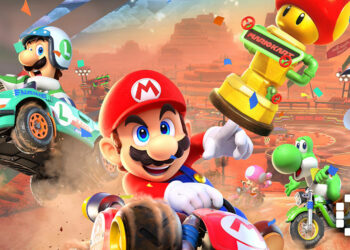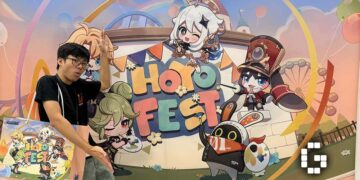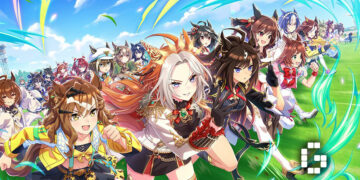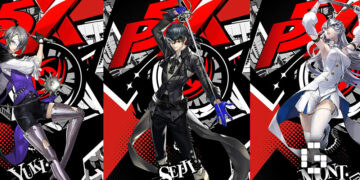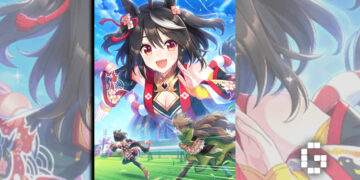Over at the annual South East Asia Game Developers Conference – LEVEL UP KL 2022, we had the chance to talk with Sarah Johana, who is the Head of Marketing in Toge Productions, an Indonesian-based Game Developer and Publisher studio in an interview.
In our interview with Sarah, she talked about how Game developers find a middle ground between creative vision and commercial decision, the concept of target persona and other various topics about the game industry.
 We previously also attended her talk about the Hook Analysis: Finding Your Game’s Design Pillars and Maximising Your Game’s Strongest Selling Point and if you’re interested in checking that out, click here.
We previously also attended her talk about the Hook Analysis: Finding Your Game’s Design Pillars and Maximising Your Game’s Strongest Selling Point and if you’re interested in checking that out, click here.
[Interview is edited for clarity]
Do you feel that Indie Game Developers have some difficulties balancing their creative vision versus commercial decision?
Yeah, I think it sort of depends on the region, but from what I see from indie developers in Southeast Asia, we’re still very product oriented instead of market oriented. But I also think that’s because we don’t have enough accessibility to information, because when I see events like GDC (Game Developers Conference) or PAX in Western Countries, they have lots of talks that cover all these topics. I’m not only just teaching about game making, but also marketing, market research, book analysis and stuff.
And of course for us who live in the Southeast Asia region, it’s hard for us to travel to Western countries to attend their events. So it’s not that indie game developers can’t partake in them, but it’s because they don’t have the access to learn about all these information.
 There’s this perception that indie developers are naive and very innocent. So bringing up having to do market research might be shocking to some. So, whenever you talk with developers for the first time, how do you break the news that we have to make some business decisions now?
There’s this perception that indie developers are naive and very innocent. So bringing up having to do market research might be shocking to some. So, whenever you talk with developers for the first time, how do you break the news that we have to make some business decisions now?
I think it’s because I don’t have a background in business, or not even marketing or management. So I think if I mention something like “Okay, let’s talk business” and they would back down. So instead of saying that, we have to understand the business. That’s why I always tell them “You guys want people to buy your game, right?” If people would want to buy your game, you have to know what it is that they want.
I would use a more friendly, familiar approach that is probably more acceptable to the developers, because I understand when indie developers graduate from school, they want to make the game by themselves. So they would only care and think about “Oh, I want to make something big and amazing! Like the next Final Fantasy game!” but they tend to forget that the team behind Final Fantasy have over hundreds or thousands of people working on it.
But again, this is something that they probably didn’t learn from school, so we need to inform them about the deep knowledge about how the industry actually works and that if you want to be successful at making games, it’s not about making the game for you, but it’s about making the game for the players. So what we try to do is have a friendlier approach when talking to indie developers.
So this is more directed for our readers who might be currently working on their game. Do you feel like there’s a point where it’s too late to do a hook analysis? Like if a game has already been released on Steam for instance?
If it already reached the final stage of development, then it’s definitely way too late. We wanted to do the hook analysis to be able to determine the design pillar, which is supposed to be in the early development of the game. Also because we don’t want to make too many changes in the game, so the sooner we do the hook analysis, the sooner we can do the iteration of the loop and process the better.
Because sometimes the analysis is not only done once, it can be done several times. So for an example, when we already did the quick analysis and say we want to make changes, we have to do the hook analysis again to validate if the design flaw that we make from that is already correct. And if it’s still not according to our expectations, then we have to do the iteration and hook analysis again. So basically, if you are already way into the development then it’s already too late, it’s better to do it during the early development phase.
One thing that was really interesting during the presentation you brought up was the concept of the target persona. Toge games in particular have a very unique portfolio of games like A Space for the Unbound and Coffee Talk. Can you share what you describe your target persona as for most of Toge games portfolio?
For Toge games in general, the ones that are doing well and have a bigger audience are A Space for the Unbound and Coffee Talk, which are narrative based games. But Toge are also working on a lot of strategy games as well, we’re currently working on Kriegsfront and also we don’t really have a specific Toge Productions target persona. So when we determine the target persona, we will try to determine it for each project, because even with Coffee Talk and A Space for the Unbound, there’s a different persona to them. Like A Space for the Unbound, players love the narrative, but they also look for something that they can play and puzzles for them to solve.

I mentioned about the four quadrants (For the personality types chart), and for A Space for the Unbound are people who love the emotional appeal of something, so they would be on the green sector. (Green being All about the feelings. Caring, Encouraging, Sharing, Patient, Relaxed) But they would also like to solve puzzles and that more towards green to blue. (Blue being Data, Stats, and Numbers. Cautious, Precise, Deliberate, Questioning, Formal).
 Meanwhile for Coffee Talk it’s different, it leans more to the Green to Yellow (Yellow being Interaction with others. Sociable, Dynamic, Demonstrative, Enthusiastic, Persuasive), because they want to play the game, or get the emotional feel from the story. They want to understand the characters, they don’t look for puzzles or anything. Even when you brew a drink in Coffee Talk, it’s not really punishing, so you can still finish the game even if you make the wrong drinks or have terrible latte art. Even if Coffee Talk and A Space for the Unbound are both narrative driven, both games have different target personas.
Meanwhile for Coffee Talk it’s different, it leans more to the Green to Yellow (Yellow being Interaction with others. Sociable, Dynamic, Demonstrative, Enthusiastic, Persuasive), because they want to play the game, or get the emotional feel from the story. They want to understand the characters, they don’t look for puzzles or anything. Even when you brew a drink in Coffee Talk, it’s not really punishing, so you can still finish the game even if you make the wrong drinks or have terrible latte art. Even if Coffee Talk and A Space for the Unbound are both narrative driven, both games have different target personas.

Because you mentioned strategy games, I actually really liked Vanaris Tactics. During your talk, you mentioned to not make the main focus of sharing culture. And I think it’s really interesting that when you look at Vanaris Tactics, I didn’t know the developer was from Brazil. Because the first few chapters of the game are about colonisation, I thought it was somewhere from Southeast Asia because that also feels like our story as well.
It makes sense in for people in Brazil, but you guys managed to make it in a way that it also relates to people in Indonesia and Malaysia, so can you talk about how that came to be?

For Vanaris Tactics, we were merely the publishers so the theme and the direction for the game is done by the developer, which was Matheus Reis from Brazil. But the reason that we signed with this game is exactly like you mentioned about delivering this message. Matheus is a huge fan of the anime Attack on Titan, where the story of show is about people that look for freedom behind the walls. So that idea is already familiar since people already watched Attack on Titan.
People will understand there’s a world where they are trapped inside and they want to get out from there. So that is the kind of world that was used as the setting for Vanaris Tactics. We loved that he wants to deliver the message, but in a more familiar way to a lot of people and it’s also relatable for us who live in SEA country, but also for those who live in Brazil or any other countries.
You mentioned that it’s good to use pop culture elements to frame a game when you’re doing a Hook analysis. But do you ever worry that sometimes people take too much to the comparison, like maybe say a developer starts making their game even more Makoto Shinkai-like because you attach that label to it. Is that a problem that you run into?
I think for Makoto Shinkai, we only use that internally. So we just put that in our design pillar where we want to make something that’s similar to the visual style of Makoto Shinkai, but the way we communicate that to the players is to look for the wording that conveys that. Like it’s inspired by something that Makoto Shinkai usually makes like “A high school student looking for answers in finding their journey”.
For Vanaris Tactics, instead of saying that “Oh, this is inspired by Attack on Titan” we say that they are trapped inside a wall. But even without saying the name of the series, they would probably already feel like it’s sort of like Attack on Titan. So we just use that reference internally, but we use that as a benchmark on how we communicate to the players.
We would like to thank Sarah Johana for taking the time to answer our questions. If you would like to know more about Sarah Johana, you can check out her twitter account here.

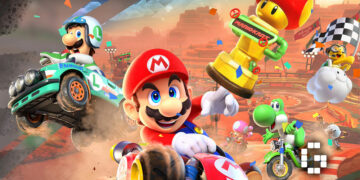
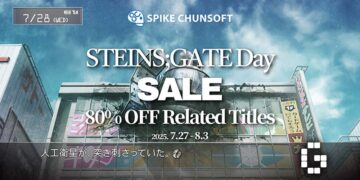

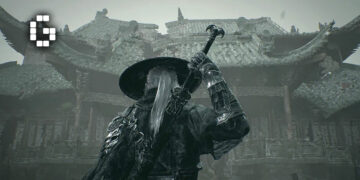
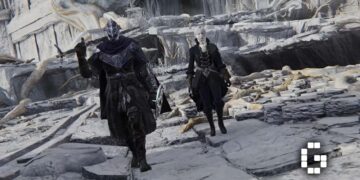
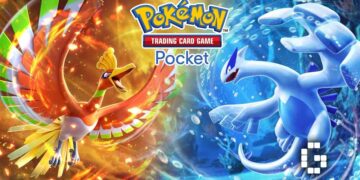
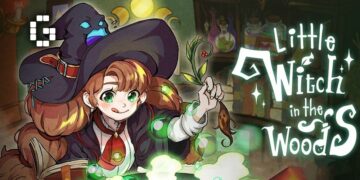
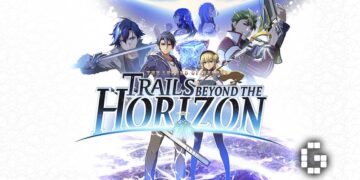
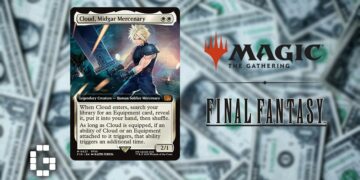

![[EXCLUSIVE] Creative Masterminds from Gearbox Software Reveal What Makes Borderlands 4 Worth the Wait](https://cdn.gamerbraves.com/2025/07/Borderlands-4-at-Bilibili-World-2025_Interview_FI-360x180.jpg)


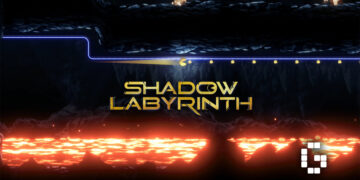

![[ASIA EXCLUSIVE] Bringing Back a Classic: Inside the Making of FINAL FANTASY TACTICS – The Ivalice Chronicles](https://cdn.gamerbraves.com/2025/06/FFT-Ivalice-Chronicles_Interview_FI2-360x180.jpg)


![[LEVEL UP KL 2022] Toge Productions Head of Marketing Sarah Johana Talks About Indie Devs Needing That Crucial First Step In Interview](https://cdn.gamerbraves.com/2022/10/Sarah-Johana-IV-Feature-750x392.jpg)

